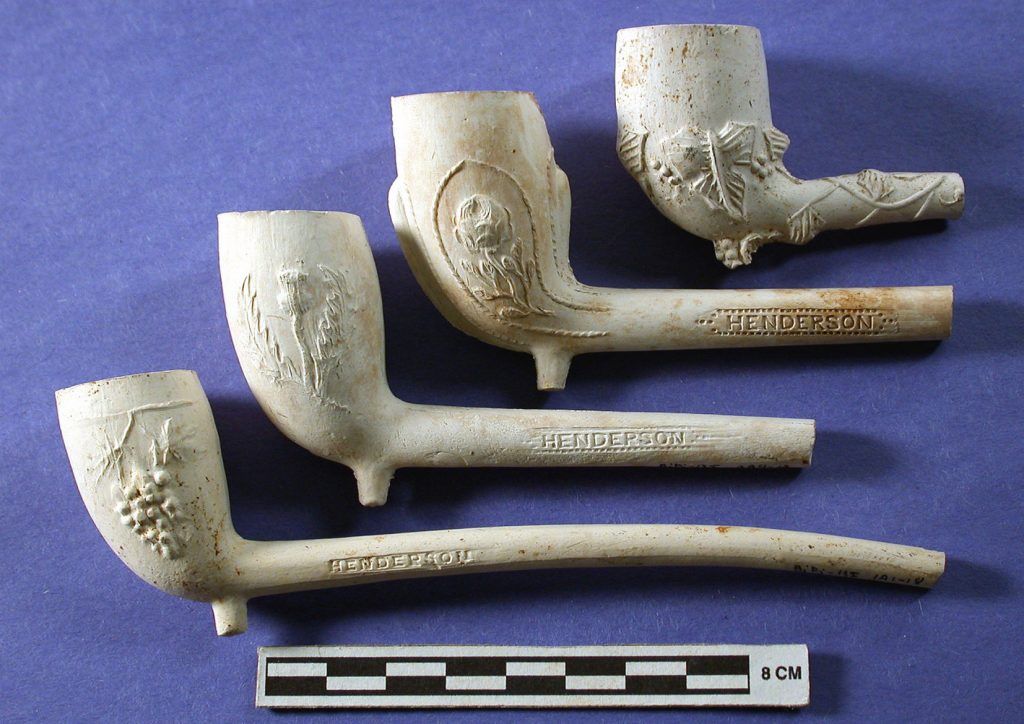Archaeologists Unearth 19th-Century Kiln That Fired Up Pipes for Montreal’s Smokers
The city was once a prominent center of Canada’s pipe-making industry
/https://tf-cmsv2-smithsonianmag-media.s3.amazonaws.com/filer/3a/20/3a202070-6f98-4c0f-9eb7-72d5b71b8fa8/img_850x450_jacquescartier_fouilles_fourhenderson_11-2019.jpg)
During the 19th century, a bustling pipe-making district at the intersection of four Montreal neighborhoods catered to Canadians in need of a tobacco fix. Among the manufacturers operating in the area was the prominent Henderson pipe factory, which produced millions of pipes each year. This past fall, reports Max Harrold of CTV News, archaeologists unearthed a key component of the factory’s operations: a “massive” kiln where Henderson clay pipes were fired before being sold to smokers.
The team discovered the kiln beneath the Jacques Cartier Bridge, a now-iconic landmark that connects Montreal and the city of Longueuil, while conducting survey work prior to the installation of a drainage system near piers on the Montreal side of the bridge. Per a press release from Jacques Cartier and Champlain Bridges Incorporated (JCCBI), archaeologists embarked on the dig with the specific goal of locating the Henderson kiln.
Historic maps confirmed that the team’s chosen dig spot was once the site of the Henderson factory and even identified the location of a kiln spanning between 16 and 19 feet in diameter. Hundreds of pipes have previously been found in the area, many of them stamped with the “Henderson/Montreal” label—another sign that the kiln was hiding nearby.
“We knew we’d come across it this time around,” archaeologist Christian Roy tells Jessica Leigh Hester of Atlas Obscura.
The kiln had been largely demolished, but Roy says the excavation team found chambers “through which the air would flow into the oven,” along with “other openings where they could put charcoal in to heat up the kiln.”
Archaeologists suspect the structure dates to sometime between 1847 and 1892. According to JCCBI, which spearheaded the dig, the kiln may have been rebuilt while still in operation, as “this type of equipment required regular maintenance and repairs.”

Tobacco smoking was a fashionable habit in centuries past: To capitalize on the trend, companies in Europe and North America produced an array of pipes made from such materials as wood, porcelain, clay and plaster.
Irish immigrants who flocked to Canada to escape the Great Famine of the 1840s may have sparked Montreal’s pipe-making craze. Prior to their arrival, the city “had little if any prior history of pipe making,” explains the late Iain Walker, a leading clay pipe researcher. “Irish immigrants were forced to make their own pipes.”
The Henderson factory was founded in 1847 by a Scotsman named William Henderson Sr. His company manufactured clay pipes engraved with delicate fruits, flowers and other designs. Clay tobacco pipes were fragile but cheap and are among “the most commonly-found [artifacts] on colonial and post-colonial settlements in Canada,” Walker explained in a 1970 paper.
Cigarettes, Walker added, “did not become the most popular means of taking tobacco in Great Britain and the United States until the end of the First World War.”
Henderson’s factory was a thriving business. It processed between 225 and 300 tons of clay each year, according to JCCBI, and by 1871, the company was producing some seven million pipes annually. Most of the people who worked in the factory were Scottish and Irish immigrants.
Henderson’s grandsons, known as the Dixon brothers, took over the factory in 1876. By the 1980s, reports Hester, the factory’s operations were winding down, and in the 1920s, the land was razed to make way for the new bridge.
The newly unearthed kiln will soon be reburied; exposing it to the harsh Canadian winter would result in its destruction, and the structure is too fragile to relocate. Roy tells Hester that an interpretive plaque may be added to the site in a nod to Montreal’s history as a prominent center of Canada’s pipe-making industry.